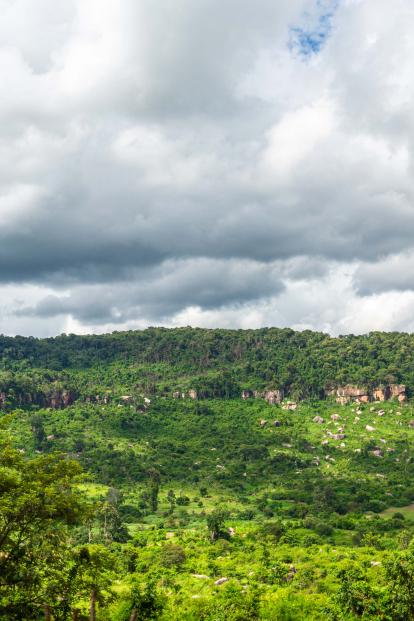Cambodia Sustainable Landscape and Ecotourism Project (CSLEP)
Background
The Cardamom Mountains-Tonle Sap (CMTS) landscape, covering about 20% of Cambodia’s territory, includes one of the most productive freshwater fisheries in the world and the largest protected forest in Indochina. However, the natural assets in this and other landscapes have been under growing pressure in the context of Cambodia’s rapid economic growth and a transition to a market-oriented economy.
The Government of Cambodia has been undertaking environmental governance reforms to address these challenges, protect these iconic landscapes and generate opportunities for its people. As a result, 41% of the land of the country (including a significant proportion of the CMTS landscape) is now managed as Protected Areas. To support these efforts, the World Bank is providing a IDA concessional loan to the Government for the implementation of the Cambodia Sustainable Landscape and Ecotourism Project (CSLEP).
Project Summary
Being implemented by the Ministry of Environment and the Ministry of Rural Development until 2025, CSLEP aims to improve Protected Areas management, and promote ecotourism opportunities and Non-Timber Forest Product value chains in the CMTS landscape.
UNDP has been engaged to provide technical assistance to the government for the implementation of CSLEP in environmental data management, sustainable financing, M&E and project management.
Expected Outputs
The project aims to attain three main outputs:
1. Technical input and advice for the development of a robust Information Systems and Decision Support as a part of the Cambodian Environmental Management Information System (CEMIS);
2. Technical input and advice for the design of sustainable financing mechanisms for protected areas;
3. Technical input and advice for effective Monitoring and Evaluation (M&E) of project activities.
Achievements to Date (2023)
Information System and Decision Support (ISDS)/ Cambodia Environmental Management Information System (CEMIS)
- A new web-platform on CEMIS has been developed and was officially launched in May 2023 by the Minister of Environment. The platform is now shared with various stakeholders for testing and validation.
- Through the CEMIS, the government can leverage advances in information and communication technologies, and cutting-edge science for evidence based and informed decision making on natural resources management. (including protected areas).
- A new Decision Support System (DSS) for reliable zonation of Protected Areas in Cambodia has been deployed for testing in three different project sites in October 2023 and expected to launch in 2024.
- A high-performance IT infrastructure and server for CEMIS/ISDS has been setup using the latest generation of hardware and software.
Sustainable financing
- The roadmap for the operationalization of sustainable financing solutions and recommendations to improve revenue management was developed. This is key to identify and generate consensus on key actions to remove the barriers for scaling up finance for protected areas and establishing partnerships to implement them.
- Prioritized financing solutions include REDD+, Payments for Ecosystem Services, ecotourism, blended finance.
Monitoring and evaluation
- Improvement in the overall loan implementation through the development of quality work plans and project progress reports and the introduction of Monitoring and Evaluation (M&E) tools such as the quarterly progress tools, beneficiaries’ satisfaction survey, job creation indicators.

 Locations
Locations





